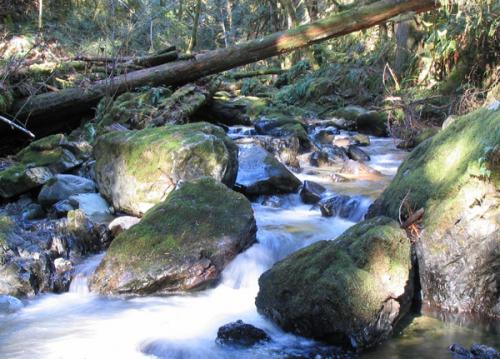
Victoria public had the opportunity to learn more about river remediation at an open house at British Columbia’s Goldstream Provincial Park this past weekend. The event highlighted remediation work in the surrounding area and river after a Columbia Fuels truck overturned in April of last year, spilling 42,000 litres of gasoline and 600 litres of diesel fuel along the Malahat section of the highway. Contaminants drained from the road into the adjacent Goldstream River, through the estuary and into the ocean. Fuel and contaminated soil were removed immediately, but contaminants remain in the soil and groundwater underneath the Trans Canada highway.
To date, work has included removing 617.95 tonnes of contaminated soil from the west side of the highway, sampling soil, water, and sediment, removing oiled vegetation and woody debris from river and banks, and in-stream sediment raking to release trapped hydrocarbons. Ongoing work includes surface water, pore water, and groundwater monitoring, plus the removal of remaining hydrocarbons using a soil-vapour extraction system by skimming any remaining hydrocarbons off the surface of the water.
British Columbia’s Ministry of Environment and stakeholders, including First Nations, are currently reviewing a draft restoration proposal prepared by environmental consultants for Columbia Fuels. While it is acknowledged that remediation will be ongoing over several years, plant life has recovered, fish have returned to the river and animals are coming to feed at the riverbank.
“All parties involved have done an outstanding job of working together to clean up and remediate this precious area,” said Environment Minister Terry Lake. “We are pleased with the commitment of Columbia Fuels to the remediation work to date and the restoration activities currently being evaluated. I also want to acknowledge the participation and great work of the First Nations and the Goldstream hatchery throughout the response to this unfortunate incident.”
Surface water quality on the river has been steadily improving and based on the Province’s water quality guidelines, it has been below detection limits for hydrocarbons since the end of July.









